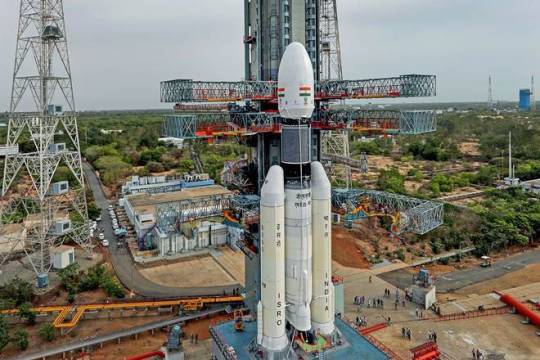Text
History of Chandrayaan-3
Chandrayaan-3 is an upcoming lunar mission by the Indian Space Research Organisation (ISRO). It is the third mission in the Chandrayaan series, following Chandrayaan-1 and Chandrayaan-2.

The Chandrayaan-3 mission aims to further explore the Moon and build upon the successes of its predecessors. The primary objective of Chandrayaan-3 is to land a rover on the lunar surface and conduct scientific experiments to gather data and enhance our understanding of the Moon's geology, topography, and mineralogy.
The initial plans for Chandrayaan-3 were announced in 2019, shortly after the Chandrayaan-2 mission faced challenges during its soft landing attempt. The lander and rover components of Chandrayaan-2 were not able to land successfully, but the orbiter module continues to orbit the Moon and collect valuable data.
Chandrayaan-3 is expected to carry similar instruments and payloads as Chandrayaan-2, with improvements and modifications based on the lessons learned from the previous mission. The mission will involve the launch of a Geosynchronous Satellite Launch Vehicle (GSLV) from the Satish Dhawan Space Centre in Sriharikota, India.
The specific timeline and launch date for Chandrayaan-3 have not been officially announced as of my knowledge cutoff in September 2021. However, it is anticipated that the mission will take place in the near future, continuing India's pursuit of lunar exploration and scientific discovery.
How it is launched?
Chandrayaan-3 is expected to be launched using the Geosynchronous Satellite Launch Vehicle (GSLV) Mk III, also known as the "Bahubali" rocket. The GSLV Mk III is a three-stage launch vehicle developed by the Indian Space Research Organisation (ISRO) specifically for launching heavier payloads, including lunar missions.
The GSLV Mk III has a height of approximately 43 meters and a lift-off mass of around 640 tonnes. It consists of two solid strap-on boosters (S200), a core liquid booster (L110), and an upper stage cryogenic engine (C25). The first stage is powered by two solid rocket motors, while the second stage uses a liquid propellant engine. The cryogenic upper stage is powered by a cryogenic engine that uses liquid hydrogen and liquid oxygen as propellants.
During the launch of Chandrayaan-3, the GSLV Mk III will be used to place the spacecraft into Earth orbit. From there, the spacecraft will perform a series of orbit-raising maneuvers and trajectory corrections to set a course for the Moon. Once the spacecraft reaches the vicinity of the Moon, it will perform a lunar capture maneuver to enter into a lunar orbit.
After entering lunar orbit, the spacecraft will gradually reduce its altitude and perform a powered descent to the lunar surface. The lander and rover components will separate from the orbiter module and descend towards the predetermined landing site on the Moon. The landing sequence will involve precise control and guidance systems to ensure a soft landing and safe touchdown of the lander and rover.
It's important to note that the exact launch details and procedures may be subject to change as per ISRO's mission planning and updates.
1 note
·
View note